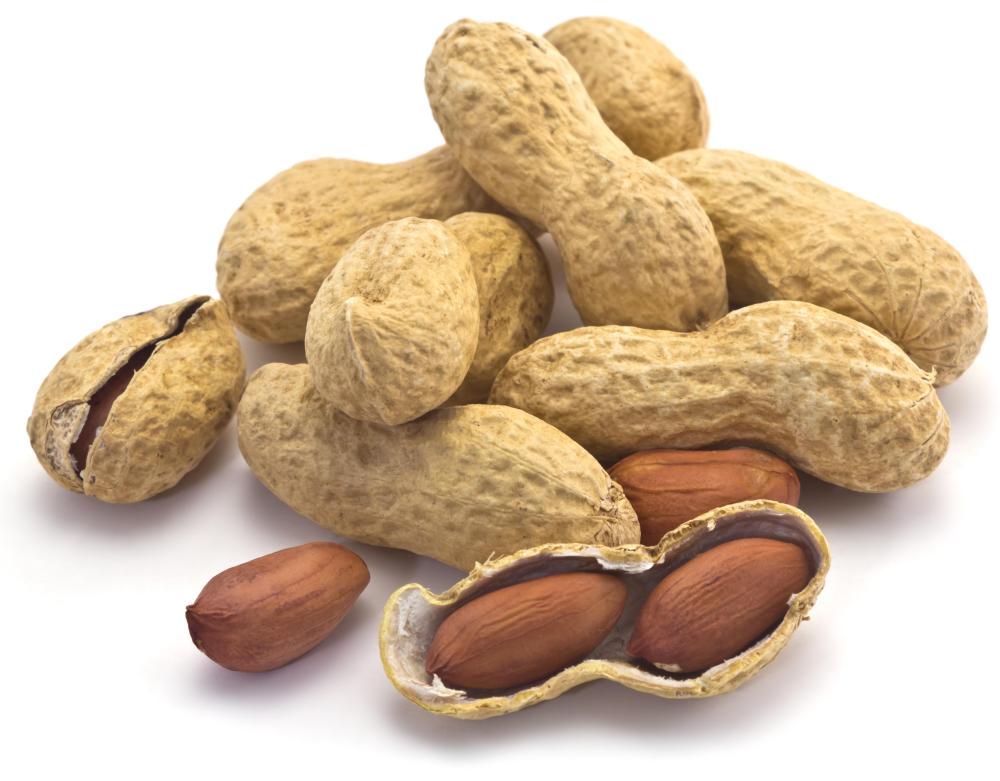At WiseGEEK, we're committed to delivering accurate, trustworthy information. Our expert-authored content is rigorously fact-checked and sourced from credible authorities. Discover how we uphold the highest standards in providing you with reliable knowledge.
Are Peanuts Really Nuts?
Peanuts, almonds, pecans, cashews, walnuts, Brazil nuts, and pistachios. It might surprise you to discover that many common foods sold as "nuts" aren't nuts at all—even some with "nut" in their name!
Chestnuts, hazelnuts, and acorns (yes, acorns are edible, with some preparation) are true botanical nuts. A true nut is a single seed encased in a hard shell (technically an ovary wall) that won’t open on its own to release the seed.
That’s very different from peanuts, which are easily shelled, and you’ll often find two seeds inside rather than one. Peanuts are classified as legumes, which produce edible seeds in pods and mature underground, just like beans, lentils, and peas.

As far as nutritional value, though, peanuts have a lot to offer. They're full of protein, fiber, vitamins, minerals, and unsaturated fats (the healthy kind). They're high in calories but low in carbohydrates. Research suggests that snacking daily on peanuts in moderation could result in a decreased risk of heart disease. They're also very affordable.
Most people think of nuts simply as edible kernels in a shell, but many of the other "nuts" you see at the grocery store are only nuts in the culinary sense. Almonds, cashews, and pistachios aren't true nuts, either. But unlike peanuts, they're not legumes. Instead, they're drupes: fruit with a fleshy outer layer and a pit that contains the seed. Drupes are also known as stone fruit, a category that includes peaches, nectarines, plums, apricots, and cherries. With peaches, for example, you eat the tasty skin and flesh and discard the pit. By contrast, when harvesting almonds, the fleshy outer layer is discarded and a seed is extracted from inside the pit.
Nuts about nuts (and seeds, drupes, and legumes):
- To make matters even more confusing, walnuts and pecans share both nut and drupe characteristics. As they are difficult to classify (and often classified incorrectly), they are often referred to as "drupaceous nuts" or "drupe-like nuts."
- Brazil nuts are in a different category altogether. Not legumes, drupes, or true nuts, they grow inside the fruit of the Brazil nut tree in a heavy woody pod that can contain up to 25 large seeds (what we think of as Brazil nuts).
- You may have come across the term "tree nut" before. This is mainly used when discussing allergies and refers to any culinary nut that isn't a peanut (also known as a groundnut). This group also includes pine nuts and macadamia nuts, which aren't botanical nuts either, but seeds.
- Signed into law in 2021, the Food Allergy Safety, Treatment, Education, and Research (FASTER) Act recognizes nine major allergens: milk, eggs, fish, crustacean shellfish, tree nuts, peanuts, wheat, soybeans, and sesame.
AS FEATURED ON:
AS FEATURED ON:











Discuss this Article
Post your comments